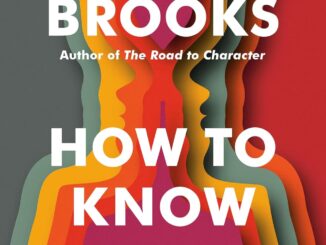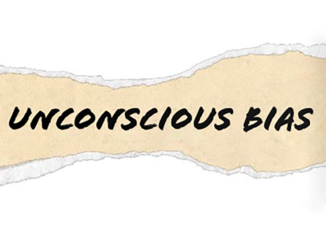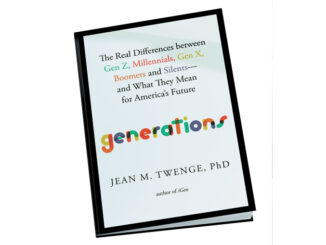
By Roben Allong, CEO, Lightbeam Communications Corp., New York, New York, robena@lightbeamnyc.com, @trendiwendii
The ability to build rapport with consumers is the stock and trade of researchers who use qualitative methodologies. Building rapport is still one of the most trusted routes to meaningful conversation and getting the all-important answer to the question, “why?”
Current rapport-building practices—let’s call them Rapport Building 101 practices—rely heavily on direct communication governed by existing societal norms, combined with spoken and body language, and on the culture-dominant lexicon. What does “culture-dominant” mean? Culture-dominant lexicon can mean, for instance, asking Black males a more culturally relatable question like “What does that do for you?” when soliciting feedback about emotions, as opposed to “How does that make you feel?” The latter is the generally accepted and typically used query among the general market population.
In this accelerated, tech-driven world that is undergoing social-cultural lifestyle upheavals and various traumas brought on by the COVID-19 pandemic and other events, it is all the more important that we embrace diversity and inclusion by using more culturally appropriate rapport and connection across all respondents whether they are moms, veterans with PTSD, health-care patients with chronic diseases, young adults, immigrants, etc., who subscribe to an individual community subculture in addition to the dominant culture.
Introductory greetings used in the dominant culture like “hello,” “welcome,” and “how’s everybody doing?” at the beginning of a focus group or in-depth interview, whether offline or online, can and do set the tone for fruitful exchanges. But these are today’s polycultural mainstream table stakes. Tomorrow’s consumers, especially Gen Z, are moving away from polyculturalism toward a microculturalism where individual cultures become the norm.
Communities across the board have been impacted differently by the pandemic and by unrelated sociocultural upheavals and traumas. The result is the acknowledgment and emphasis on recognizing more complex and fractured identities and an emergent mainstream that emphasizes microculturalism as the new normal. Therefore, much greater microcultural awareness and savvy are new skills that are increasingly more essential to establishing a culturally meaningful rapport that underscores free exchange and engagement—especially among Gen Z who are growing up in a rapidly demographically evolving world. A recent Pew Research Center U.S. survey1 projects that by 2044, the majority population of America will be nonwhite. More importantly, while most seem neutral on the shift, those in the all-important target age group of 18 to 29 believe that the shift is good for society. Therefore, an updated version of Rapport-Building 101 is needed to level-up the conversation to meet those shifts and the consumers of tomorrow.
To be frank, today’s researchers (moderators, in particular) are already like trapeze artists putting on a show. Establishing and maintaining connection, while staying focused on the content of the conversation and key questions that need to be answered, takes quite a bit of skill and expertise. We must remind ourselves that establishing and maintaining connection—with respondents of all persuasions and communities—drives game-changing, rich, and meaningful insights.
In this shifting world, several categorical factors make microculturally-based Rapport-Building 201 even more essential. I will discuss these factors. Then I will offer suggestions on how to navigate them with a focus on the importance of deep listening and creating a safe space for all voices to be expressed, authentically.
Factors that Make Rapport-Building 201 Even More Essential
Contactless Interactions
Since the COVID-19 pandemic began, in-person connection and communication took a hit due to the impact of measures like social distancing and contactless interactions, all designed to stop the spread of the virus. The forced hiatus of in-person interaction, the changing political and cultural climate, along with the COVID-19-related death toll of close to one million souls here in the United States alone, has taken a significant physical and emotional toll on the public psyche. In addition, over the past two years we have all adapted to technology that allows for effective, efficient contactless interaction. It’s the difference between using a horse and buggy back in the early 1900s and adapting to the motorcar that was standardized and mass-produced in the 1920s. Communication technology is the equivalent of a mass-produced motorcar. It’s here to stay. In fact, now we have electric vehicles. While in-person research isn’t going away soon per se, the trifecta of speed, convenience, and ease of use provided by virtual communication technology makes collecting qualitative data through contactless interaction a game changer.
Increasing Mental Health Issues
Mental health and anxiety disorders have struck four in ten adults since the pandemic began, according to a recent Kaiser Family Foundation Report.2 We saw this play out on the world stage among several celebrated world-class elite athletes, such as Naomi Osaka and Simone Biles, just to name a couple. Both specifically cited ongoing mental health struggles brought on by the unexpected loss of family members, abuse, bouts of depression, anxiety, and the pressures of high competition and other concerns. This is by no means unique and reflects what is happening all around us. According to the Centers for Disease Control and Prevention (CDC), over 40 percent of adults reported struggling with mental health in June 2020 alone. Furthermore, that number is higher among the 18–24-year-old marketing target, according to the CDC Morbidity and Mortality Weekly Report (MMWR)3 issued in April 2021. Acknowledging and seeking comfort and solace from mental health struggles are no longer hidden away in the shadows but are now accepted open topics for conversation, community building, and to spur healing.
Today, our respondents—our clients’ consumers—want and expect more acknowledgment, comfort, and understanding as they deal with the emerging challenges of post-pandemic life. Researchers who use qualitative methods, especially moderators, need to meet them where they are in order to create the type of cultural bonds necessary for authentic, meaningful engagement and exchange.
Disparate Impact on Diverse Groups
The health and well-being of not just the average consumer but entire communities, especially Black, Indigenous, and People of Color (BIPOC), have been disrupted over the last decade in ways we are just now uncovering and understanding. Grassroots activism and social mobilization such as Black Lives Matter, the Women’s March, #MeToo, and voting rights are global movements that are impacting democracies, not only in the U.S. but across the globe. The consequences and collateral damage are weighty for all—businesses, marketers, and consumers alike.
Nontraditional communities (NTCs) are forming and re-forming, similar to bees’ swarms, as videos or tweets go viral on social media platforms like TikTok, Twitter, and Instagram that speak directly to and temporarily connect like-minded people around the world. Arguably, NTCs ruled by influencers with more than 300 million followers (which is 90 percent of the U.S. population, by the way) wield tremendous influence and power, if not greater than that of traditional communities (TCs). Traditional communities were often based on specific societal roles, tribal traditions, rituals, and demographics. Today, digital nontraditional communities spring up arbitrarily on social media platforms based on openness to other cultures, shared beliefs, and other intangible similarities. An example of an NTC is the IG Live Versus music battles and Club Quarantine (CQ), which brought together NTCs made up of thousands of hip-hop and R&B global music listeners across gender, race, ethnic, and culture lines, simultaneously. This is epic for those who have historically been denied access and, as a result, have been disproportionately impacted by social, economic, and environmental upheavals.
Brand communications on these platforms—if not authentic, culturally relevant, accurate, and inclusive—that target NTCs, especially those of color, can land brands in a consumer-mandated “time-out” box. To be fair, in the current chaos, marketers are having a tough go of it as they try to restore and refresh their brand-consumer dialogue and relationships that have been disrupted. Unfortunately, we’ve seen this type of brand story play out more and more across a myriad of categories, from luxury fashion brands like Dolce & Gabbana with insensitive campaigns that invite ridicule, to media brands like Fox News with spokespeople who repeat cultural stereotypes, to food brands like Papa John’s with CEOs who are recorded using derogatory slurs. The list goes on. The point is, BIPOCs—especially with the advent of NTCs—are more empowered to express the effects of disparity in the digital sphere, which has few limits; they will expect researchers to be more mindful than brands.
Moving Forward
Building rapport that matches not just today’s, but tomorrow’s landscape, means reexamining the way we listen to, decipher, and understand all consumers. To get a head start on where consumers are going, rapport must evolve to use new vernacular—new cultural expressions and ways of engaging versus relying on that which was influenced by the dominant culture or have become dated in the lexicon. The modern art of rapport-building is about tapping into three critical post-pandemic consumer Cs (Comfort, Connection, and Community) in culturally relevant ways, to help gather authentic and meaningful insights at an accelerated pace. This assumes you already have a basic understanding of NTCs and the advent of microcultures that exist within the dominant culture.
Elevate Comfort Level with Empathy
The pandemic trauma and its aftermath, as well as its disparate impact on BIPOCs, is baked into the state of well-being—or not-so-well-being. When conducting any kind of qualitative research and/or usability study, whether it’s a blind interview, focus group, shop-along, or online diary, etc., all depends on establishing an immediate connection with respondents. Therefore, it behooves us to pay a little more attention to their well-being.
For example, making eye contact, whether in an in-person or virtual setting, may not be enough. Whether online or offline, there is deep value in a genuine smile reflected in the eyes, a welcoming tone of voice, and a relaxed “we’re in this together” vibe before starting. This cuts across ethnic, race, and gender lines and goes a long way toward providing authentic comfort, not “performative” comfort. Adding a simple empathetic inquiry such as “How are you feeling today?” before launching into the topic of discussion, or “Are you comfortable participating?” once the logistics of the discussion have been explained, emphasizes that caring and comfort are prioritized. This kind of simple acknowledgment and validation gives respondents the feeling that they are being fully seen and, importantly, that the researcher is fully present.
Body language and microexpressions unconsciously register in the brain immediately. Gestures, and nonverbal physical expressions like tapping fingers or clearing one’s throat, often a sign of anxiety, are processed first by the limbic system. They often supersede and sometimes precede speech. Visible physical gestures and empathetic connection are particularly important for BIPOC respondents, in part because of the impact that systemic racism and discrimination, in addition to the COVID-19 pandemic, have had on the community. Body language can also be more helpful in reducing some of the hypersensitivity and friction that many inherently possess and feel, which they align with their experiences.
Empathetic sharing and probing, by both moderator and backroom guests, puts respondents’ mental comfort first. This helps demonstrate that the discussion environment, whether online or offline, is operating as a safe space with transparent guidelines for all to tell their truth from the get-go.
Spark Richer Dialogue with Cultural Awareness and Tone
Because we are transitioning toward more contactless interactions, emphasis on moderator tone, body language, and cultural awareness is becoming more critical to conversation deciphering and context setting. Demonstrating cultural empathy—understanding beforehand that everyone’s literacy level is not the same—is essential to meeting respondents where they are early in the conversation. Including lexicon and familiar simple terms, in relatable-phrased probes such as “tell me more about that” throughout the conversation, does two critical things:
1. It creates richer, more authentic dialogue.
2. It makes mining for those authentic, nonperformative insights easier to achieve by eliminating barriers to sharing faster.
Tone can also be very powerful because it conveys a “behind-the-scenes” genuine understanding that sparks higher-level sharing, just like punctuation marks can emphasize or alter the way a message is received (for better or worse).
Sustain Connection with Code-Listening
For many, especially extroverts, the general assumption is that establishing rapport is easy. You say “hello,” the listener responds in kind, and we begin some sort of a dialogue. Getting beyond the introductions and maintaining a meaningful and revealing dialogue, however, takes some finesse.
Code-listening before speaking is part of the finesse needed to not only develop a lasting, meaningful moderator-respondent connection but also to alert respondents, especially BIPOCs, to how they and their stories might be received. Code-listening is culturally sensitive listening that pays closer attention to and picks up on tonality, lexicon, phrasing, and body language that is more authentic to the culture of the respondents, as you hear it. This comes down to building nonverbal trust between communicator and communicatee. A quick and comprehensive example of this is smiling using only your mouth and not your eyes. Eyes often convey a wholly independent emotion aside from the rest of your face and body. Moderators should take heed from Paulo Coelho, author of The Alchemist, who wrote, “The eyes are the mirrors of the soul and reflect everything that is hidden.” If your eyes do not share the warmth of your smile, then perhaps trust may not come about so easily.
Understand Code-Switching to Build Trust
BIPOCs, especially, have a very high bar when it comes to trust and often code-switch to be accepted, rather than reveal their true identity and emotions. When moderating groups that are comprised of different ethnicities and cultures, it’s important to not only emphasize the aspect of coming together for a common purpose to build an NTC in that moment; it is also important to emphasize that the conversation is a collaboration in which each person can feel free to bring their authentic self, culture, and voice to reduce code-switching. Notice the use of the word “can.” “Can” speaks to ability and potential, which is culturally meaningful to BIPOCs for reasons stated previously. Verbs like “should” or “could” can be perceived as condescending.
Understanding colloquialisms and the context in which they are used is a key step in making respondents truly feel comfortable, that they are in a safe space, and that their voice is being heard. Code-switching takes place when respondents switch from their own microcultural expressions and codes to those used in the dominant culture in order to be accepted and fit in. Before engaging in conversation, use your observation and code-listening skills to better interpret when code-switching may be taking place. Notice the signals of attire, hairstyle, and facial expression; these can announce cultural nuances essential to reading the room accurately. To some extent, it may require you to go a step further to get immersed in the culture to be able to sustain a meaningful connection. This presumes that you have a basic familiarity with the culture as a whole.
Part of advancing your rapport-building skills and expertise is understanding that a focus group or interview recruit that is diverse and representative of the population is not necessarily culturally neutral. Culture-dominant respondents often come to a focus group or interview with their culture on their sleeve. They already feel a basic sense of belonging. However, respondents who are not culture-dominant will code-switch to fit in with the dominant culture that is visibly present once the moderator begins to speak. This happens both online and in person. To code-listen more effectively, you will also need to tap into the “culturally ambiguous”—those who may appear one way based on race, gender, ethnicity, vernacular, education, and income level, etc.—but in reality, outside of the study, do not identify with the perceived cultural tribe.
Use Cultural Code-Listening to Avoid the “White Gaze”
To build more advanced, in-depth rapport and avoid misinterpretation, researchers need to pay closer attention to signals and codes that are being used interpersonally to accurately decode the meaning in respondents’ expressions and the point of view from which they tell their narratives. Building rapport with a new focus on cultural code-
listening instead of on dated values and attitudes can elevate the conversation in ways that reveal new, diverse points of view not subject to the “white gaze.” For example, before introductions, asking about the group or respondent and their loved ones’ well-being as COVID-19 retreats, especially among Latinos, shows that the moderator is acknowledging and cognizant that the impact of COVID-19 has been significant and perhaps touched extended family, common in immigrant, Hispanic, Black, and Asian households. According to the Pew Research Center,4 one in five Black people in the United States are immigrants or children of Black immigrants. Asians are projected to become the largest immigrant group in the United States by 2055, surpassing Hispanics.
Build NTCs with Authentic Inclusivity
Diversity in a focus group or recruit is not inclusivity. Diversity is making sure everyone is represented, whereas inclusivity is ensuring that everyone has access to have their voice heard equally. Building rapport in today’s world must emphasize the practice of creating safe spaces to ensure that all voices, especially those who have been marginalized, are free to speak their truths without fear of judgment from others.
One of the lures of social media is its ability to give voice to and empower the voiceless and form and re-form all manner of NTCs anonymously and without penalty. According to Statista.com5, in 2020 over 3.6 billion people were active on social media. That number is projected to increase to 4.4 billion within three years. While social media, in general, may not be a safe space for many, it does allow for authentic NTC-building without restrictive social norms or guard rails.
Researchers must be mindful of which social norms are observed and the guardrails that are being implemented. Because rapport building is at the root of accelerated conversation and connection, respondents, too, are forming “instant” NTCs that require an elevated level of transparency to avoid othering. Othering is often invisible. It is a practice whereby individuals are categorized as nonconforming and treated as though they are not part of the group-by-group members. Authentic inclusivity ensures that everyone in the conversation can speak without being chastised, judged, ignored, or “othered.” By reassuring respondents of a collaborative conversation, moderators can openly address this phenomenon early in the conversation, especially in focus groups where groupthink and peer pressure often manifest.
Give Respondents More Control to Elevate Rapport
When building rapport today, especially among Gen Z, it is critical to be transparent from the start and invite them to take ownership of the community as it is being created so that they feel a sense of unity, equity, and inclusivity. These feelings are important to them. By encouraging authentic versus performative sharing of emotions, attitudes, and opinions throughout the process, moderators can not only accelerate NTC-building but also sustain it for more creative, collaborative respondent participation. This means being confident and willing to encourage them to lead the conversation versus the moderator. This participatory approach is particularly effective when engaging with teens and young adults.
Rapport-Building 201 is about updating core values and aspects of the traditional qualitative approach that have become dated to meet and match the accelerated pace of today’s conversations. The benefit of adopting Level 201 is adapting to the evolving ways we converse and connect. Being more mindful of the concerns of tomorrow’s consumers, as well as the way they express themselves, can help researchers level-up the conversation and insight mining approach.
Diversity and Inclusivity
Diversity in a focus group or recruit is not inclusivity. Diversity is making sure everyone is represented, whereas inclusivity is ensuring that everyone has access to have their voice heard equally. Building rapport in today’s world must emphasize the practice of not only ensuring that all voices, especially those who have been marginalized, are free to speak their truth without fear of judgment from others but also the creation of safe spaces that encourage the environment in which to so do.
Use a Culture-Driven Approach for Breakthrough Insights
Engaging more culturally aware and driven empathetic approaches to the three Cs—Comfort, Connection, and Community—when conducting research using qualitative methods requires at a minimum staying current with post-pandemic cultural attitudes and mindsets as they continue to evolve. It is important to note that the basic elements of culture are language, norms, beliefs, symbols, values, and cognitive elements—how we learn to cope. It is transmitted from one generation to another. Culture can be influenced by a few key factors: environment, socioeconomic and geographical conditions, demographics, science and technology, and media or information dissemination. Facilitating more effective rapport and sustaining conversations that lead to authentic, breakthrough insights starts by using Rapport-Building 201 as the way to level-up the conversation.
References:
- Pew Research Center, “Americans are more positive about the long-term rise in U.S. racial and ethnic diversity than in 2016.” By Abby Budiman. Published: October 1, 2020.
- Kaiser Foundation Report. Mental Health Impact of the COVID-19 Pandemic: An Update. By Audrey Kearney, Liz Hamel, and Mollyann Brodie. Published: April 14, 2021.
- Mental Health, Substance Use, and Suicidal Ideation During the COVID-19 Pandemic—United States, June 24–30, 2020. Published: Weekly/August 14, 2020/69(32);1049–1057: Czeisler MÉ, Lane RI, Petrosky E, et al. Mental Health, Substance Use, and Suicidal Ideation During the COVID-19 Pandemic—United States, June 24–30, 2020. MMWR Morb Mortal Wkly Rep 2020; 69:1049–1057. DOI: http://dx.doi.org/10.15585/mmwr.mm6932a1external icon.
- Pew Research Center, Key findings about U.S. immigrants. By Abby Budiman. Published August 20, 2020.
- Statista.com, Social Network Penetration Worldwide from 2019-2025. Published by Statista Research Department January 28, 2022.




